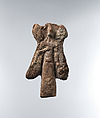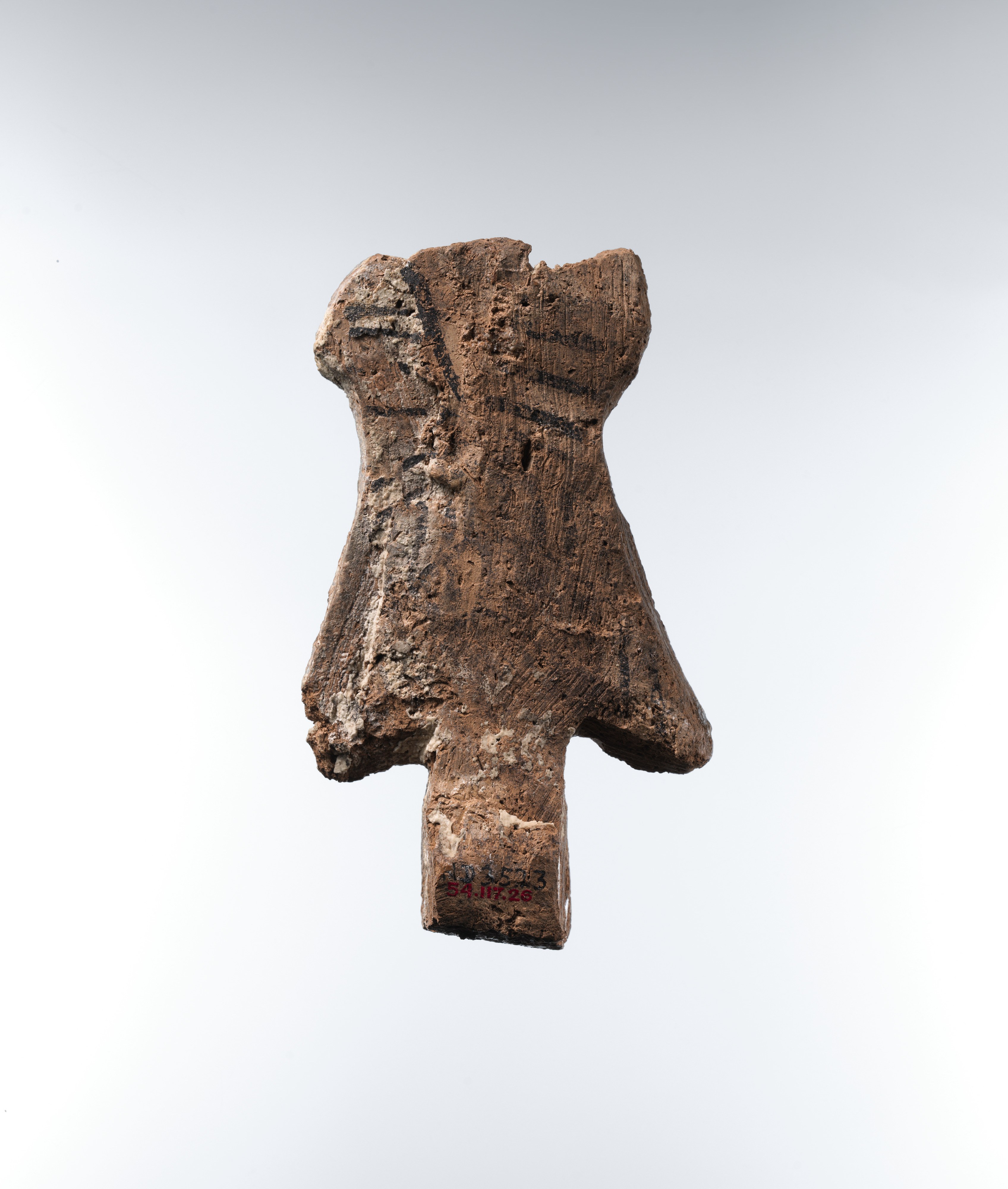Apkallu figure: bird-headed, winged figure carrying a bucket
Not on view
This small baked clay figurine takes the form of a frontal figure with four large wings and a human body, clothed in a long garment. The face was formed by pinching the clay to create a pointed protrusion, resembling a bird’s beak. The left arm is extended along the body and holds a bucket, while the right is bent at the elbow and the right fist clasped to the chest. Although created in clay rather than stone, the figure closely resembles the monumental winged eagle-headed figures carved in relief on the walls of the Northwest Palace, on view in the Assyrian relief gallery at the museum (32.143.7). The figurine was made by pressing clay into a mold, a common method of manufacturing plaques and figurines in Mesopotamia since at least the Ur III period (ca. 2100-2000 B.C.). A thousand years later, during the Neo-Assyrian period, practitioners of magic had developed techniques for protecting interior spaces of buildings by means of a ritual that involved depositing an assemblage of figurines beneath the room’s floor. This figure was found buried under the floor in a room in a palace building at the Assyrian royal city of Nimrud, suggesting that it was intended for this function.
Due to rights restrictions, this image cannot be enlarged, viewed at full screen, or downloaded.
This artwork is meant to be viewed from right to left. Scroll left to view more.



